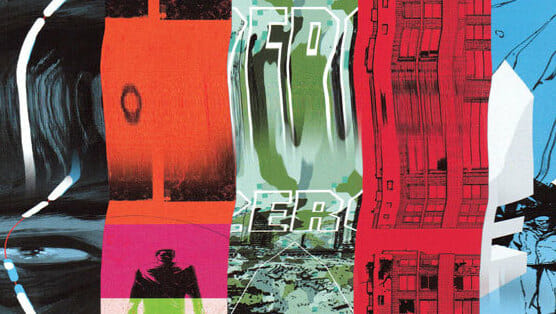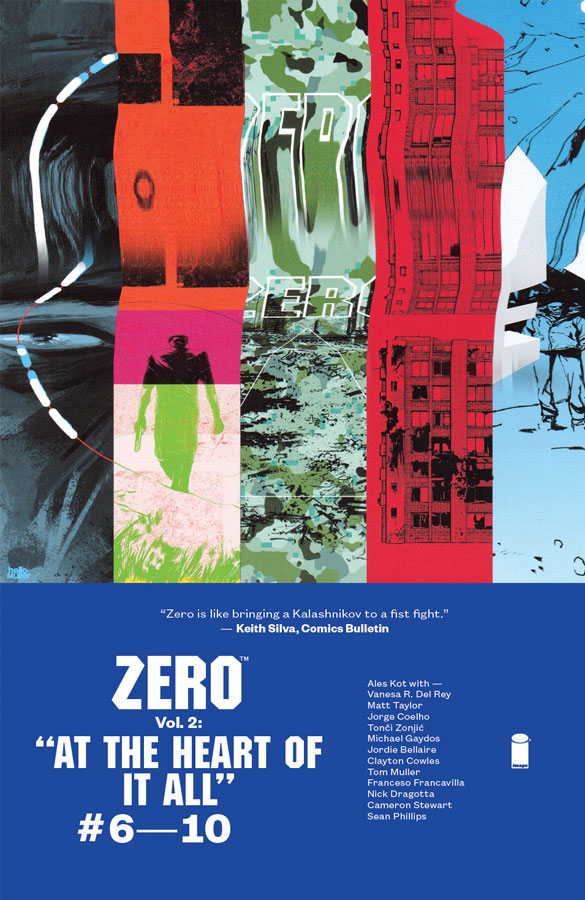Zero Vol. 2 by Ales Kot

Writer: Ales Kot
Artists: Various
Publisher: Image
Release Date: September 10, 2014
There’s a line in the seventh issue of the spy thriller Zero where writer Ales Kot casually mentions Italo Calvino, the famous Italian journalist and postmodern author. In this particular scene, one character ruminates about beaches and moons and tries to pick out a referential Calvino short story; he can’t seem to remember and gives up. The literary dot he was trying to connect was most likely “The Distance of the Moon” from the short story collection Cosmicomics. It’s a dreamy tale about a time in history when the Moon was so close to Earth that you could traverse the distance with a ladder. People would come and go, collect moon milk, and jump back to Earth. But slowly the Moon tore away, forever separating the two. One could call Kot’s line a complete throwaway, dismissed as easily by the reader as the character who said it. But I couldn’t shake the feeling that Calvino provided some integral insight into Zero.
Like Cosmicomics, Kot’s Zero is a story told in parts. Each issue, penciled by a different artist, presents a small vignette detailing the life of born-and-raised secret agent Edward Zero. Both works also tell stories that lie just beyond our perceived reality. In Zero, most events take place in the near future, a time that’s easily identifiable but isn’t exactly relatable. You feel like a passing tourist, not quite comfortable in your altered surroundings.
Most importantly, Zero and Cosmicomics both deal with loneliness, loss, and the need for connection. Edward Zero has been conditioned since childhood to suppress empathy and vulnerability, only worrying about the mission — but there are cracks in that steely resolve as the reader catches glimpses of our protagonist’s humanity as he grows tired of perpetual loss.
Commenting on the nature of Zero is tough, mainly because few mainstream works like it have been published before. Volume 2 picks off where Volume 1 left off … in its own way. The individual issues present single puzzle pieces, with each installment filling in vital information and insight on issues past and future. These issues can stand alone, but together they illustrate an overarching story about a secret agent and his journey for answers — not just about global espionage and his career, but about his personal identity as well.
-

-

-

-

-

-

-

-

-

-

-

-

-

-

-

-

-

-

-

-

-

-

-

-

-

-

-

-

-

-

-

-

-

-

-

-

-

-

-

-









































